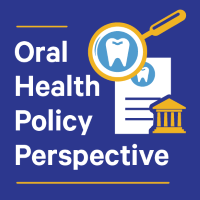Enter your email to receive the CareQuest newsletter:
May 29, 2025
Caroline Le, Public Policy Analyst, CareQuest Institute
An issue historically left to local governments is now drawing attention from some state and federal leaders — and the outcome could affect our health for generations.

Water fluoridation has been a hot topic during the last few months, with Florida and Utah enacting statewide bans and similar proposals under consideration across the country. Against this backdrop, two researchers — Sung Eun Choi, PhD, from the Harvard School of Dental Medicine and Lisa Simon, MD, DMD, from Brigham and Women’s Hospital — conducted an eye-opening study to model the potential impact of eliminating fluoride from public water systems nationwide. The article, “Projected Impact of Removing Fluoride from Public Water Systems in the United States,” was published May 30 in JAMA Health Forum.

The findings are clear: Ending water fluoridation could result in more than 25 million additional decayed teeth among children in the next five years, with the greatest impact on low-income and uninsured families. This would lead to an estimated $9.8 billion in added health care costs, further straining an already overburdened dental workforce and deepening the nation’s existing oral health crisis.
We spoke with Drs. Simon and Choi about what motivated their research, what advocates need to know, and how evidence-based policymaking and storytelling can work together to protect a proven health intervention. Their insights reinforce that water fluoridation is a safe, cost-effective way to improve oral health — and that any efforts to eliminate it will drive up health care costs, including in Medicaid.
Why did you do this research now? What was the intent?
Dr. Simon: Water fluoridation has been one of the great victories of public health, and as both a physician and a dentist, I have seen how patients growing up in unfluoridated communities have suffered worse oral health. But fluoridation is under threat, with Utah and Florida already passing bans and several other states considering a ban. We wanted to empower citizens and lawmakers with information about the potential harms that could come from stopping fluoridation.
What would you point to as the key findings?
Dr. Choi: Using a simulation model designed to mimic the progression and impact of dental disease in the current population, our study found that eliminating fluoride from US public water systems would significantly increase the risk of tooth decay among children — resulting in an estimated 25.4 million additional decayed teeth and $9.8 billion in added costs over the next five years. Given the current distribution of access to fluoridated water, this change would disproportionally affect publicly insured and uninsured children, who already face a high risk of unmet dental needs.
Why is fluoridation so critical for children from families with lower incomes or who live in rural areas?
Dr. Simon: Fluoridation is beneficial for everyone who receives it, including both adults and children. But the people who benefit the most are those who would otherwise not have access to preventive dental care. We know that rural and low-income families are less likely to have a dentist who works in their neighborhood or who accepts their insurance, making it more difficult for them to receive dental care to prevent tooth decay and tooth loss. But fluoridation is easily accessible to all — straight from the tap.
What, if any, are the limitations of the research?
Dr. Choi: Disease simulation modeling is a powerful tool, but it also has inherent limitations. These models rely on assumptions about disease progression, behavior, and intervention effects. Although we calibrated our model to reflect national averages in disease progression, it may not fully capture local or subgroup variations, reducing the model’s applicability to certain communities or states. We conducted sensitivity analyses to assess the robustness of our results, but uncertainty in how parameters interact may still influence outcomes in ways that are not fully measurable. Our study also adopted a health care system perspective, which may exclude broader societal impacts, such as missed school hours or caregiver burden resulting from increased risk of tooth decay — potentially underestimating its impact on total costs and quality of life.
If funds were limitless, what additional research would you like to do on this topic?
Dr. Choi: We focused our analysis on the pediatric population due to the limited data on water fluoridation access among adults. And even among children, the most recent data available were from 2013–2016. With access to more current and comprehensive data on fluoridation coverage, including geographic variation across states, we could expand our model to represent the entire US population. This would allow us to assess the broader national impact of eliminating fluoride, as well as state-specific effects, which would enhance the relevance of our findings for policymakers and public health planning.
What are people misunderstanding about fluoride?
Dr. Simon: When something has worked for so long and so well, people can start to take it for granted. People in the US rightfully want to keep their families safe and healthy — but fluoridation is a way to do so, not a threat to health. We know that fluoridation greatly decreases tooth decay, which has individual, population, and economic benefits. We also know that it takes chronic fluoride exposure at levels multiple times that of community water fluoridation to cause any negative cognitive effects. Our absolute best evidence is that water fluoridation is all positive. In fact, Calgary, Canada, removed fluoride from their water in 2011 and, this year, voted to put it back due to the sharp rise in tooth decay!
What do you want a policymaker to take away from this study?
Dr. Choi: Eliminating fluoride from US public water systems would substantially increase tooth decay among children, resulting in billions of dollars in additional health care costs, and further disadvantage children with the greatest oral health needs. Maintaining and optimizing water fluoridation remains a cost-effective public health strategy, offering well-established benefits and minimal risk at current recommended levels.
What advice do you have for oral health advocates who are trying to get through to policymakers on this topic?
Dr. Simon: First, follow the evidence. We hope our research allows advocates to put a price on the harms caused by stopping fluoridation. Evidence from other countries like Canada and Israel who eliminated fluoridation and saw the impact on children’s teeth are instructive, too.
Second, share your stories. It’s important for all of us to remember that stopping fluoridation has real, human costs. It will mean more children getting toothaches that keep them from learning, parents missing work to seek emergency care for their kids, and adults missing more teeth decades down the line. These stories — your stories about the value of oral health — can be even more powerful than numbers.
Where would you point any oral health stakeholders — providers, policymakers, patients — to go to learn more about fluoridation?
Dr. Simon: I recommend the American Academy of Pediatrics’ Fluoridation hub (https://www.aap.org/en/patient-care/oral-health/fluoridation). It’s a wonderful resource with lots of information about the benefits and safety of fluoride for both families and clinicians. For those interested in a deeper dive, the 2024 National Toxicology Program monograph on fluoride (https://ntp.niehs.nih.gov/sites/default/files/2024-08/fluoride_final_508.pdf) is the most comprehensive resource on the safety of fluoridation, produced by government experts.
Editor’s Note: Oral Health Policy Perspective is a new occasional blog series from the CareQuest Institute Policy & Advocacy team. Look for more stories, news, and updates about critical oral health policy issues in the coming months.